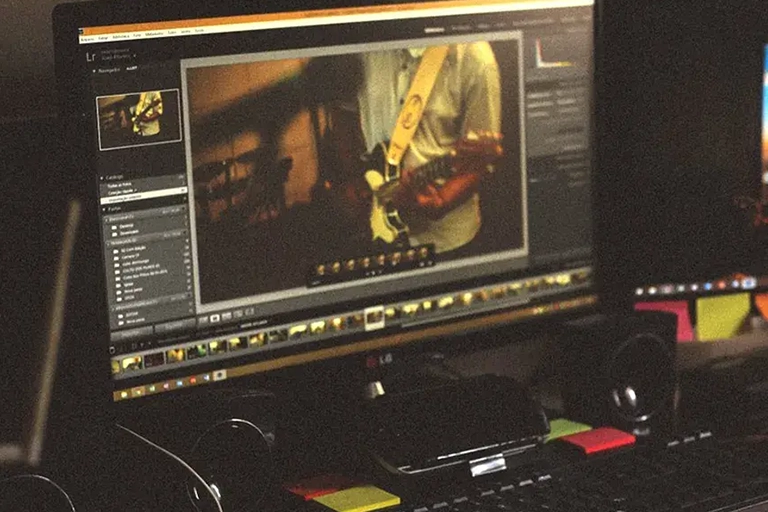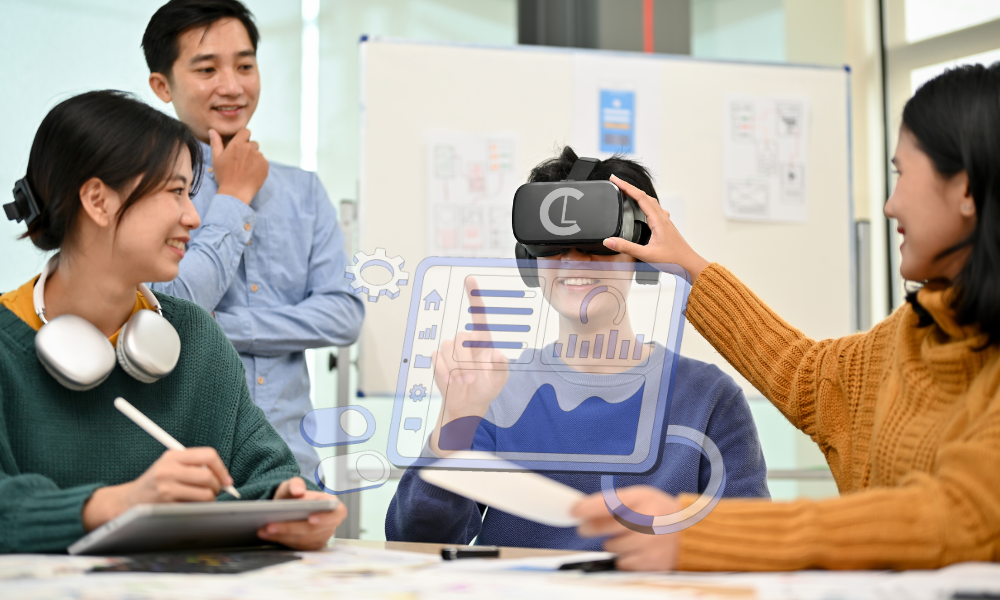LOCALIZATION ENGINEERING, A KEY COMPONENT
Many people underestimate the level of engineering requirements needed in localization. In fact, translation is only a part of the localization process. Localization project includes various technical processing and tasks that support the work efficiency of translators and QA Managers, ensure linguistic consistency, solve practical technical problems, and generate localized products for delivery.
Localization Engineering is thus a key component within any localization project. It uses a variety of software technology and tools to assist localization teams, and runs through the whole process of localization. Generally speaking, Localization Engineering is all the technical work in localization work.
Here is a series of articles shedding light on Localization Engineering. We will cover common problems and challenges, as well as solutions that localization teams encounter.
In this article, we’ll tackle the main challenges that teams must face when handling multimedia localization projects and show how to create multimedia standards to facilitate subsequent localization work.
THE TECHNICS BEHIND MULTIMEDIA LOCALIZATION
Today, multimedia localization has become an important branch of localization industry thanks to the rapid development of multimedia content in recent years. Multimedia localization is a relatively complex process which usually includes the creation and translation of screen text, dubbing scripts, the processing and adaptation of animation and graphics, the production of video and the formatting of the final file.
The multimedia files provided by some enterprises are not always standardized, which leads to an increase in production time, cost and error rate. For example, subtitles in some video files are merged with the video and cannot be extracted. The negative outcome will be twofold, the localization team will have to type out the subtitles before translation, resulting in time and cost increase.. In other cases, the screen text of some projects can not be edited. This means that the text would also need to be typed, proofread, and then translated. In post-production, the translated screen text will need to be patched over the original version, style and effect of the translated text have to be fixed one by one to ensure consistency with the source text as much as possible.
4 CHALLENGES MULTIMEDIA LOCALIZATION FACE
Creating a flawless process for multimedia localization is challenging, and the following are the top 4 challenges usually met:
1. Project Budget
Multimedia localization is a complex process composed of multiple steps and getting it wrong can easily increase the cost by 2x or more. Whether it is translation, dubbing or editing of multimedia files, there must be a sufficient budget to support it. Therefore, how to minimize the costs for clients is an important element the multimedia localization project team must consider.
2. Source Files
Often times the video being localized is dropped to the team that handles translation and the source of the video is unknown, whether produced by a 3rd party vendor, a former marketing team, or from a business partner in which case customers are not able to provide relevant localizable assets of the video. For instance, the text content corresponding to the voice in the video may not be given which will add a transcription step to the process.
3. Use of Non-Professional Dubbing Team
Dubbing is usually used in Corporate Videos, Video Games, eLearning, Commercials and other Marketing videos. Generally, video dubbing requires native speakers, professional dubbing equipment and recording studio. Similarly to subtitling dubbing, synchronization is also critical so that the voiceover matches video and frames. With skilled multimedia engineers, script and audio files will have proper time stamps, and voice synchronization adjustment can be performed.
4. Lack of Subtitling Expertise
Adding subtitles to a video seems simple, but it also requires certain professional skills. The translation must not cover too much screen space, so there is a standard set limits to the number of characters per line and location on the screen. Subtitles that are too long would be very tiring to watch, particularly for the international audience. If the subtitle is not properly synchronized with the video or audio, the audience would also be confused. An experienced and highly skilled localization engineer will ensure that subtitles appear properly, eliminate incompatibility, naturalize subtitle reading and make the translation imperceptible to enhance the experience of the audience.
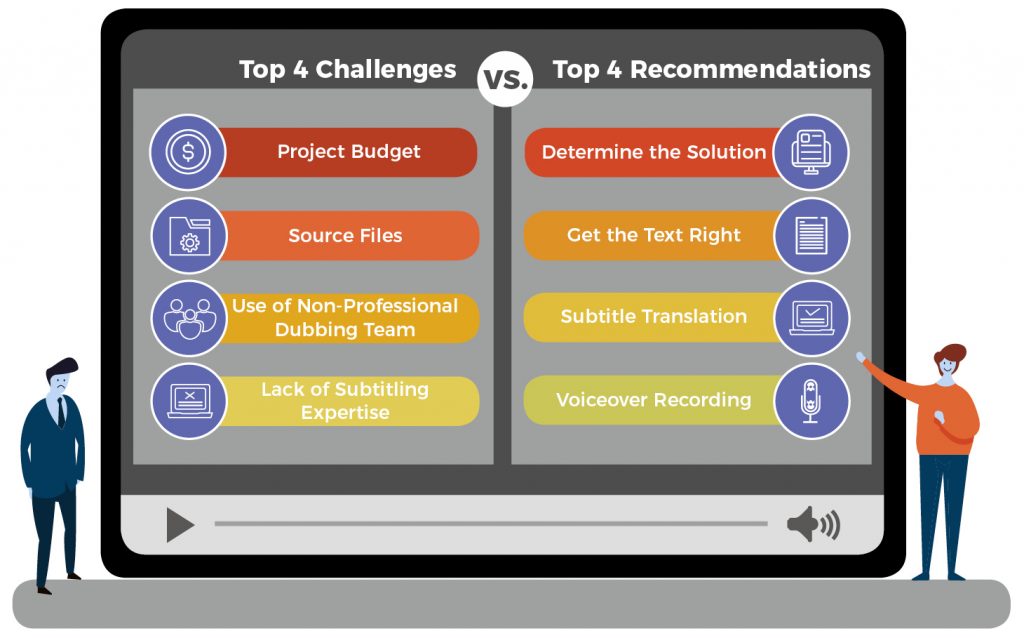
SOLUTIONS FOR FLAWLESS MULTIMEDIA LOCALIZATION
In order to deal with these challenges, it is necessary to provide the best solution through a complete and efficient localization project. Many unprepared enterprises fail to acknowledge the risk of unqualified multimedia localization. To help raise awareness about the technicalities and nuances of localizing multimedia content, we’ve compiled a list of the top 4 solutions. This can help enterprises avoid pitfalls in the process of multimedia localization from the very beginning.
1. Determine the Solution
It is necessary to clarify what contents need to be translated and produced when receiving multimedia files. And then analyze the file types to determine whether it is technical training, film and television works, news, or political videos. Next, different solutions according to different video types and customer requirements would then be determined. Professional multimedia software tools can be selected offering process automation that will save costs down the road. For example, for technical product description videos professional softwares can be used to automatically generate voiceover, such as audio reader XL to realize text to speech conversion. Evidently, movies and TV series dubbing requires a high-standard selection of the corresponding native language voice talents for professional dubbing. In short, cost of video or multimedia localization project can be reasonably reduced depending on customers’ requirements and the actual files provided.
2. Get the Text Right
If clients can not provide subtitle scripts, screen text, animated text, etc., they can use some professional technology and software to extract them. For example, Adobe Premiere or Camtasia can be used to extract the audio from the video, then use tools to convert audio into text, and finally, the corresponding native speakers can proofread the text. The input of some languages must be directly performed by the corresponding native speakers without applying corresponding audio to text tools.
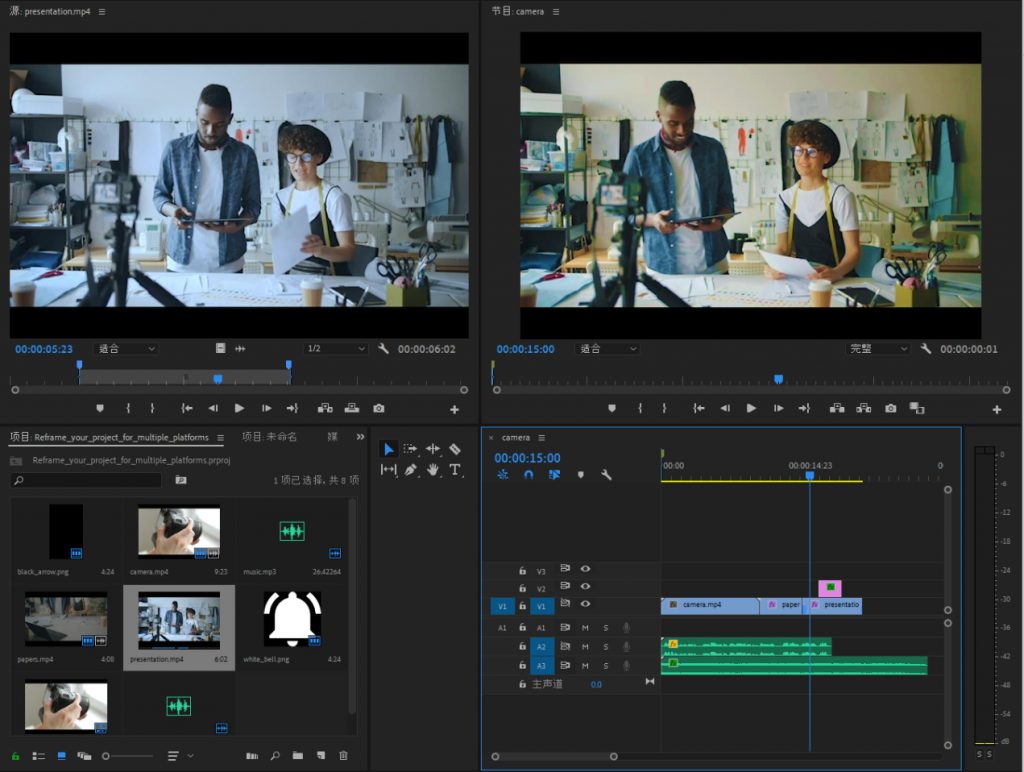
3. Subtitle Translation
In general, once translated, the subtitle is never exactly identical in length. Translated subtitles are either longer or shorter than the original. Professional translators will rely on their experience and translation techniques to maintain the accuracy of the translation while ensuring that the translation does not exceed the word limit and meets the requirements of display time. As a result, combined with the content of the video, the translation is as touching and effective as the source subtitle.
Then Multimedia Engineers need to use professional software, such as Adobe Premiere, to carefully watch each scene frame by frame. They must create an accurate timeline and match the sound, subtitles and pictures, so that the audience can easily read the subtitles and have a fulfilling viewing experience.
Find more about Voiceover Recording throughout our Voiceover Series articles:
5 Tips To Mastering The Art Of Voiceover In The Video Games
The Importance Of Explainer Video Voiceover Explained
The Newly Favored Approach: Elearning
4. Voiceover Recording
Voiceover requires a professional recording studio and close cooperation with voice talents to ensure that the recorded audio execution is natural and smooth. Moreover, consistency with the time stamp, lip sync and scene of the video is also crucial, so as to realize seamless connection and smooth transition between audio tracks. It is also necessary to make sure that the dubbing voice and the video match properly. Audio Technician will play an important role ensuring that the audio files are clean to synchronize.
CHECKLIST FOR SUCCESSFUL MULTIMEDIA LOCALIZATION
In order to successfully execute the multimedia localization project, enterprises with localization needs should also provide some detailed information and parameters about multimedia files as much as possible, so as to facilitate localization personnel to carry out their work as soon as possible. This can lead to achieving twice the result with half the time and energy required. However, it is sometimes difficult for clients to think of what needs to be communicated in advance.
Below is a list of requirements for your multimedia localization project you want to confirm before kick off:
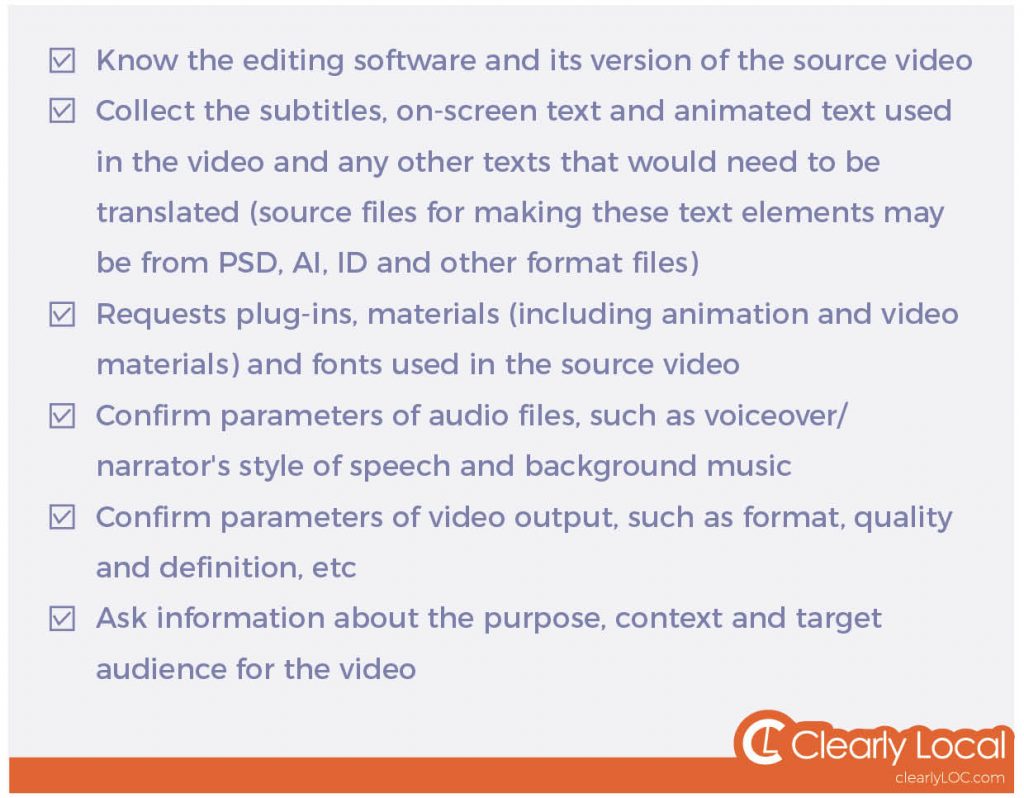
To receive a customized multimedia localization checklist covering up to 30 must check items, feel free to send an email to warren.cao@clearlyloc.com with “MMCHECKLIST” in the subject line.
TAKEAWAY
It is paramount to ensure that the multimedia works are flawless before launching them in the global market. Multimedia localization not only requires high-quality translators, but also skilled Localization and Multimedia Engineering team, as well as software and hardware. At Clearly Local, we have expert Localization Engineers with 20 years of experience working on all type of projects and file formats. Through the years, our Engineering team has developed dozens of tools, and worked on API system integration to roll out automation Furthermore, we have a well-trained translation team to provide high-quality multimedia translation. We also have skilled localization engineers to provide professional multimedia related software services.

